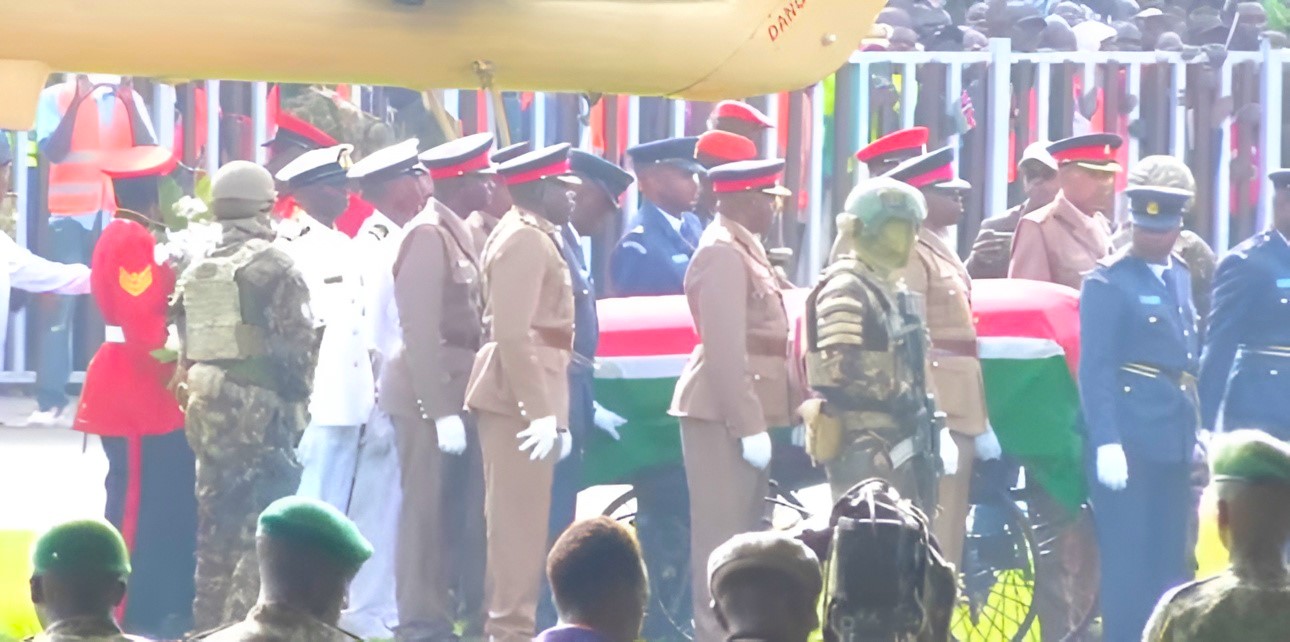An air of reverence swept across Mamboleo Grounds in Kisumu as the body of former Prime Minister Raila Amolo Odinga arrived to a grand, military-led ceremony that blended national pride with deep sorrow.
Thousands of mourners filled the arena, witnessing a farewell that stood as a symbol of unity, discipline, and honour for a man whose name defined Kenya’s political journey for decades.
The late leader’s body had earlier been airlifted from Kisumu International Airport aboard a National Intelligence Service helicopter, following a solemn flight from Nairobi’s Lee Funeral Home.
The journey was carried out by a Kenya Air Force Leonardo C-27J Spartan with the call sign ENIGMA01 — a fitting reference to the man often described as Kenya’s “political enigma.”
Upon arrival, the casket was received by uniformed officers standing at attention, their movements carefully synchronised in a perfectly timed sequence.
Dressed in full ceremonial gear, the military formed a disciplined line of honour before the casket was placed onto a black carriage prepared for the procession.
The Kenya Air Force took lead, fastening themselves to the wheeler that carried Raila’s remains across the field, flanked by officers from the Kenya Police Service.
Every step of the procession was deliberate and measured, accompanied by the rhythmic sound of boots striking the ground in harmony.
Ahead marched the Kenya Army, proudly lifting the national flag high above the crowd, followed by religious leaders holding sacred texts and white flowers in a symbolic prayer for peace and eternal rest.
In a striking display of coordination, the Kenya Navy joined the march in perfect formation — a rare moment showing all military branches moving as one.
Their unified march reflected more than ceremony; it captured the essence of national solidarity in mourning a statesman whose influence extended far beyond politics or region.
Around the stadium, emotion ran deep. The stands came alive with chants, whistles, and the waving of national flags as others lifted green twigs — a traditional sign of mourning and respect. Tears and pride blended in equal measure as Kenyans watched their defence forces carry out a farewell reserved for few.
When the carriage reached the central platform, the officers came to a respectful stop. The casket was then lifted onto a raised podium draped in the national flag, where silence fell over the crowd. Moments later, the clear sound of trumpets filled the air as both the national and East African anthems were played.
Every mourner stood still, hands raised, eyes glistening — united in one final act of tribute to a leader who had walked with them through the highs and lows of Kenya’s history.
